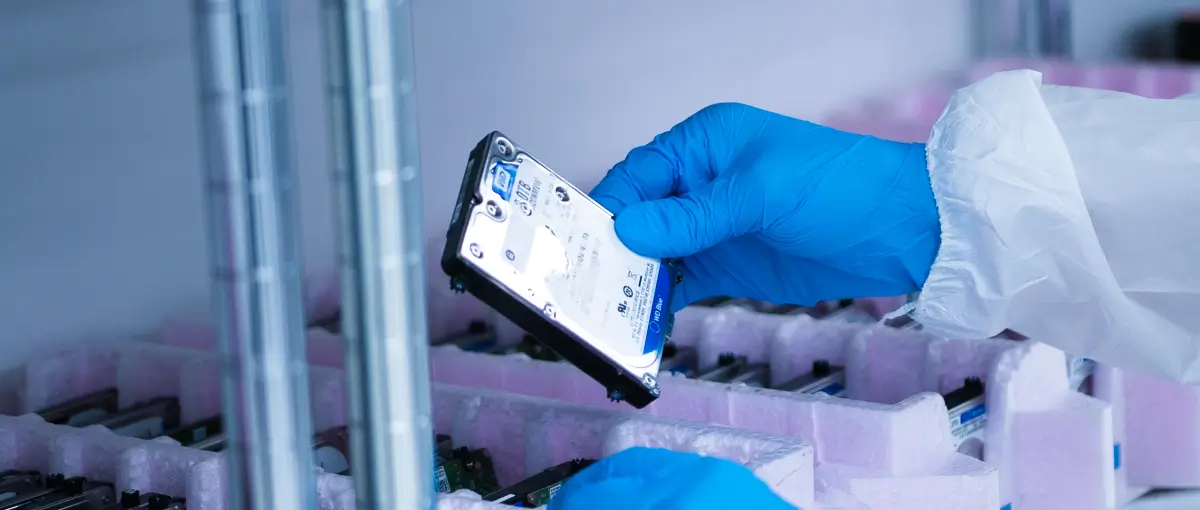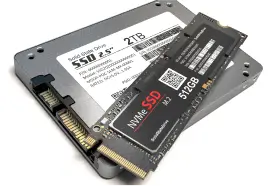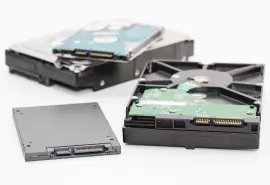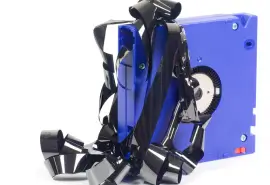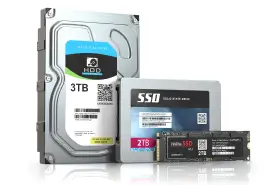As technology has progressed, mechanical hard drives are no longer the only storage option for your computer or laptop. Solid State Drives (SSD) are a sleeker and more efficient type of drive that uses flash memory instead of platters and other moving parts. Many consumers have chosen this device because of its speed and reliability, but the question remains, how long will that reliability last? This post will break down an SSD, how it compares to other devices on the market, and will hopefully answer the question of what its lifespan really is.
Components of a Solid State Drive
A solid-state drive does not have any moving parts like an HDD. Inside are several main components including a SATA power connector, SSD Controller, a DRAM Cache and NAND flash memory. This type of memory is found in USB drives, memory cards, and other flash memory devices.
An SSD reads and writes data to flash memory chips. The interior is organized into a grid pattern, which is broken down into blocks. The size of the blocks varies and all the data in one block must be refreshed when any portion of information is updated. When the drive is not in use, a process occurs where data in an old block is erased to make room for new information to be written there again.
Benefits and Drawbacks of Using a Solid State Drive
Since the SSD drives do not have any moving parts like a hard disk drive, they are considered to be more durable and last longer physically. The shape and size of the drive itself are smaller and sleeker than an HDD and overall use less energy to operate. Reading and writing data takes place much faster than on an HDD, but this speed comes at a higher cost. The interior design of the drive, however, does not allow for as much storage capacity as a hard drive.
The actual act of writing to a flash memory cell in an SSD can cause it to wear down. Each memory cell in the drive has layers of oxide, and when the state of the cell shifts, meaning data is written to or deleted from it, the layers wear down. Eventually, it will lose the ability to contain electrons and reading and writing become near impossible.
Longevity of an SSD in Your Computer
An SSD will last longer if the amount of data is stored in single-level cell memories. So when data is written to a cell, there is only one bit of information in each cell. Other models have multiple bits of data in a cell, making it more difficult to read the proper information when called upon. This results in wear and tear trying to find the correct data at a certain time.
While early on, solid-state drives could wear down quickly because of write requests, they have become more modern and operate much smoother. Many use a technique in which cell writing is spread throughout the whole disk to make wear of the disk more even. Some models can withstand writing up to terabytes-worth, but overall these devices should not be used for large companies or databases with constant writing.
The general lifespan of an SSD comes down to the age of the drive, number of TB written over time, and drive writes that occur per day. Some tech companies use a formula that multiplies write cycles and capacity, divided by the SSD factor multiplied by the amount of data written to the drive each year. In some cases, this number may come out to hundreds of years. However, generally speaking, the age limit for an SSD that is written to on an average basis is somewhere around 10 years.
Recovery When SSDs Fail
Though SSDs fail roughly 25% less often than an HDD, they still may fail due to file corruption, general wearing out, or electrical damage caused by a power outage. When this happens, it is important to choose a company who has the expertise and ability to work on all models and types of solid-state drives.
The engineers at Secure Data Recovery have an overall 96% success rate on all media and operating systems. We have the advanced tools to work with flash media and our research and development team is constantly discovering innovative ways to recover from flash memory and SSD media. Call to start your case at 800-388-1266.

